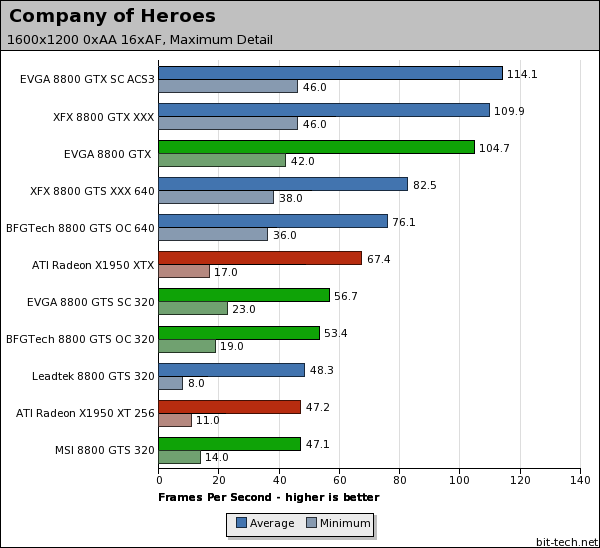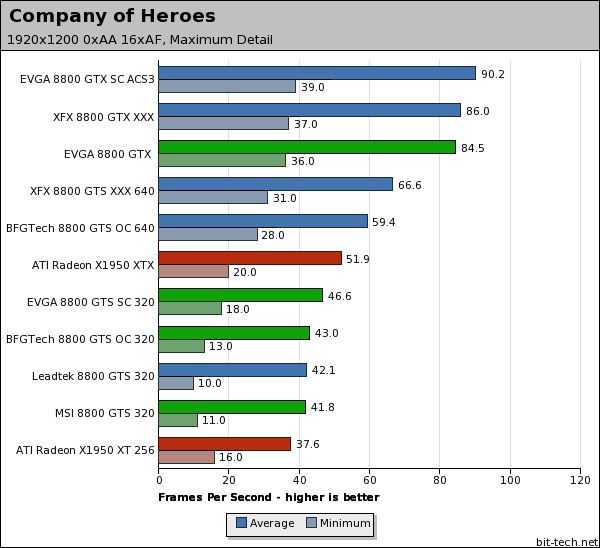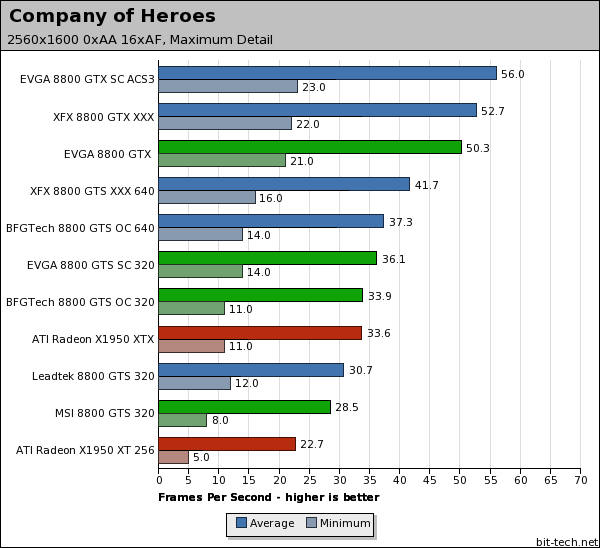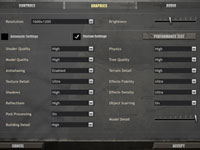GeForce 8800 series round-up
February 20, 2007 | 15:51

Company of Heroes:
Publisher: THQWe used the full retail version of Company of Heroes patched to version 1.3.0. It's touted as one of the best real-time strategy games of all time. Not only is the gameplay incredibly good and immersive, the graphics engine is simply stunning, making extensive use of post processing and advanced lighting techniques in the fully destructible environment. It's also scheduled to get a DirectX 10 update soon.
The graphics already look superb, but with the additional performance benefits and image quality enhancements that DirectX 10 will bring, we're expecting it to look even better than it does now. Relic tells us that it plans to make extensive use of the geometry shader, with the addition of things like point shadows and also fuzzy grass support too. By fuzzy grass, Relic means grass that will have micro displacements that break up the detail in the base terrain texturing.
Relic also plans to leverage some of the other benefits to DirectX 10, to improve performance with more graphical features turned on. The developer's plan to add more detail into the world with more smaller object details in the world. Of course, all of these will react with the world and will be fully destructible like every other element in the Company of Heroes world. For our testing, we used the in-built demo to gauge performance - in this rolling demo, there is heavy use of water, lighting, explosions and also masses of vegetation and it represents fairly typical performance throughout the game.
We had some problems getting ATI's cards to run with anti-aliasing enabled, so we have limited comparisons between these cards to 0xAA 16xAF at 1600x1200, 1920x1200 and 2560x1600. All in-game details were set to their maximum values.



The same happened with XFX's GeForce 8800 GTS XXX Edition video card too; XFX tells us that the stream processor clock is at the default clock speed, but RivaTuner's monitoring utility didn't seem to want to agree with that. BFGTech's GeForce 8800 GTS OC 640MB card has the same core speed as the XFX and also has an increased stream processor clock. After testing the XFX with the memory clock set to 1600MHz (the memory clock on BFGTech's card) we still experienced higher frame rates on XFX's 8800 GTS XXX. Based on this, we can only assume that XFX's card does have a higher stream processor clock.
Leadtek's PX8800 GTS TDH 320MB card has a slightly higher core clock than MSI's NX8800GTS-T2D320E and this meant slightly higher frame rates - you're not going to notice this kind of difference in clock speed in the real world though and you'll ultimately end up with a very similar gaming experience from both cards.

MSI MPG Velox 100R Chassis Review
October 14 2021 | 15:04









Want to comment? Please log in.